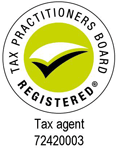
If you run a business, you already know the juggling act that comes with managing the payroll process — paying staff on time, managing cash flow, and staying compliant. From 1 July 2026, there’s a major change coming that will reshape how you handle superannuation contributions for staff. It’s called Payday Super, and it became law on 4 November 2025. The new rules are designed to close Australia’s $6.25 billion unpaid super gap and make sure employees — especially casual and part-time workers — get their retirement savings when they get paid. What’s Changing? From 1 July 2026, you’ll need to pay superannuation guarantee (SG) contributions at the same time as wages, rather than weeks or months later. Employers will have seven business days from payday to ensure contributions hit employees’ super funds. If payments are late, the Superannuation Guarantee Charge (SGC) will apply — that means paying the missed super plus an interest and administration penalty. Once SGC has been assessed, additional interest and penalties may apply if the SGC liability isn’t paid in full. Unlike the existing system, SGC amounts will normally be deductible to employers, although penalties for late payment of SGC won’t be deductible. On top of this, the ATO will retire the Small Business Superannuation Clearing House (SBSCH) platform from 1 July 2026 for all users and alternative options should be sought. The change isn’t just about compliance — it’s about impact. The Government estimates the earlier payments could boost an average worker’s retirement balance by around $7,700. Why It’s Good for Business This reform might sound like extra admin, and it might take a bit of getting used to, but it can actually simplify your payroll process and strengthen your reputation as an employer. Less admin – Paying super when you run payroll means no more quarterly payment crunches. Fewer compliance risks – ATO data-matching will pick up issues faster, helping you avoid penalties before they snowball. Stronger employee trust – Staff can see their super growing in real time, which might help with engagement and retention. Smoother cash flow management – Paying smaller, regular amounts of super is often easier to manage than large quarterly sums. The ATO will take a “risk-based” approach for the first year, focusing on education and helping businesses transition smoothly. If you pay on time, you’ll likely be flagged as low risk, meaning fewer compliance checks. How to Get Ready — Practical Steps to Take Now You’ve got time before the rules kick in, but the smart move is to prepare early. Here’s how: 1. Check your payroll software. Most modern systems (like Xero, MYOB, or QuickBooks) already support payday-aligned super. Confirm your setup and check if any updates or integrations are needed. 2. Map your pay cycles. Note how often you pay staff (weekly, fortnightly, monthly) and calculate the seven-day payment window for each. 3. Brief your team. Make sure whoever manages payroll understands the changes. The ATO has free online resources and webinars to help. 4. Plan your cash flow. Consider shifting from quarterly to more regular payments now to get used to the timing. Smaller, frequent super payments can reduce cash flow shocks. 5. Monitor and review. Set up a monthly check to ensure super contributions have cleared correctly. Keep an eye on ATO updates as final guidance is released. If you outsource payroll, contact your provider soon — many are already updating systems for Payday Super and can help you make a seamless switch. The Bottom Line Payday Super isn’t just a compliance change — it’s an opportunity to make your payroll more efficient, your staff happier, and your business more compliant with less effort. With the laws now passed and just over 6 months to prepare, it’s time to get ahead of the curve. If you’d like help reviewing your payroll setup or planning the transition, get in touch with our team — we can help you make sure your business is ready to go when Payday Super commences.














